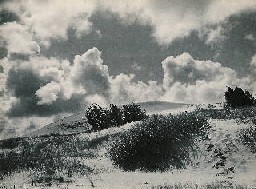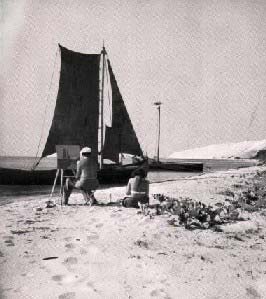Artists & famous Guests

A picture by the photographer Victor Moslehner
The Courland Spit caused a stir quite early with its special landscape qualities. "The Courland Spit is so odd, that one must have seen it just as Spain or Italy, if there shouldn't be a wonderful picture missing in one's soul. (my translation)" This often quoted words wrote Wilhelm von Humboldt, after he travelled on an official trip from Tilsit via Memel to Pillau in 1809- he was head of the Prussian Ministry of Education. He was driving in a carriage along the spit. "A narrow stripe of dead sand, at which one side the sea was raging endlessly, and at the other a quiet area of water, the lagoon, was bathing it. So I drove almost for 24 hours, a day and a moonlit night, always with one wheel in the water. (own translation)"
Humboldt doubtlessly was impressed; of course he had never expected to be later quoted anytime the Courland Spit would be mentioned. The time of enthusiastic artists and swarms of visitors still lay in the future and in Humboldt's' days the Courland Spit has been a through road, not a place to stay. The coast of the Baltic Sea had to wait till the end of the 19th to be discovered as a summer and health resort. But till the late twenties travels and longer holidays were available only for a few wealthy families.
The dunes, the sea, the lagoon and the - seen through the eyes of city
dwellers - picturesque villages and barges were a popular and rich subject
for painters and photographers. In Nidden a meeting place for all kind of
artists could be found at the guesthouse of Herman Blode, now called an
artists' colony. Even so many poems about the beauties of the spit existed
that their creators were known as "spit poets". For visitors and
summer guests as well the Courland Spit became a known travel destination
and after the First World places like Cranz and Nidden were well established
and almost famous.
